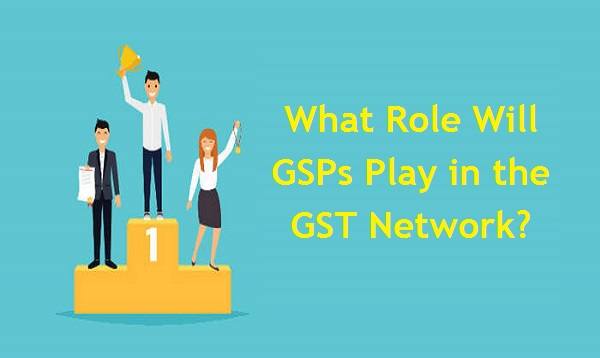The Goods and Services Tax or GST will need to run on an IT platform with tools like GSP or GST Suvidha Provider and ASP or Application Service Providers to support it. GSP basically stands for GST Suvidha Provider and through this, taxpayers and users can carry out the GST provisions vis-à-vis an online platform. The GSP is therefore held to be the enabler for taxpayers so that they may comply with GST rules in an online platform. It is authorized by the Indian Government and using the GSP, individual taxpayers can file their IT returns. So, all GSPs will be controlled by government and they will run according to the MoU.
Agreements will be signed between the GSP and the GSTN which is a government organization. In the ASP and GSP, taxpayers must provide the important details so that returns may be calculated automatically. Details of taxpayers are then extracted to be converted into their GST returns.
These are filed then on their behalf with GSTN through the GSP. The GST will have a G2B website so that taxpayers can access these systems. This will however not be the only way by which taxpayers can interact with the GST network. They can also use third party applications that have user interfaces through their desktops and mobiles. These third party applications will be able to link with GST network through secure ASPs. So, the GSPs have been basically designed to offer helpful strategies to the citizens so that they can communicate with the systems till GST returns have been filed. In this process, there has to be two collaborative arrangements. One will be between the GSP and the App client and the other between GSP and GST. The GSP and App provider may be one entity. So, given the new environment of the GST administration, the GSP is expected to play a crucial role. The GSTN will try to build a GSP eco-system to make sure it is successful by constructing an open and participative framework to benefit capable entrepreneurs and businesses.
GST compliance by taxpayers: Taxpayers under this new regime must offer the following data from time to time:
• Invoice data uploads
• Upload GSTR-1 which is based upon the invoice data as well as other information supplied by taxpayer
• Downloading of data on inward supplies as Draft GSTR-2 from the GST portal.
• Matching of purchases that have been made and downloaded from GST portal.
• Filing of GSTR-3 created by the GST portal based upon GSTR-1 and GSTR-2.
The GSP will offer taxpayers all services that have been highlighted above besides maintaining separate business ledgers like the purchase and sales ledgers and value-added services. The GSP will also ensure that there is an automatic reconciliation between purchases made and entered in purchase register and the information downloaded in GSTR- 2. There may also be trade-specific needs which the GSPs must satisfy.
The GST system will therefore have a G2B portal for the benefit of taxpayers. There will many types of taxpayers like large and small businesses, small retail vendors, SMBs etc. They will need different types of facilities for converting their sales data into a GST-compliant format. So, the GSP will be responsible for helping taxpayers to comply with GST rules through innovative solutions.
Implementation Framework: The GST is predicted to be successful because of the convenience it will provide for individual taxpayers. He will be free to use many third-party applications that will offer different interfaces for use in mobiles and laptops. These GSP-developed apps can connect through secure APIs; they will use these to enrich the taxpayer’s experience. All the APIs can be accessed across HTTPS protocol. This is beneficial because:
There will be consumption across platforms and technologies depending upon individual needs.
Automatic uploading and downloading of data
Power to adapt to changing taxes and business regulations and end-user models
Integration with ERPs and accounting systems which taxpayers usually use for their daily activities
Interesting Topic : Getting Help For GST: 5 Things To Keep In Mind Before Choosing A Partner Or Solution






 Live Chat
Live Chat
